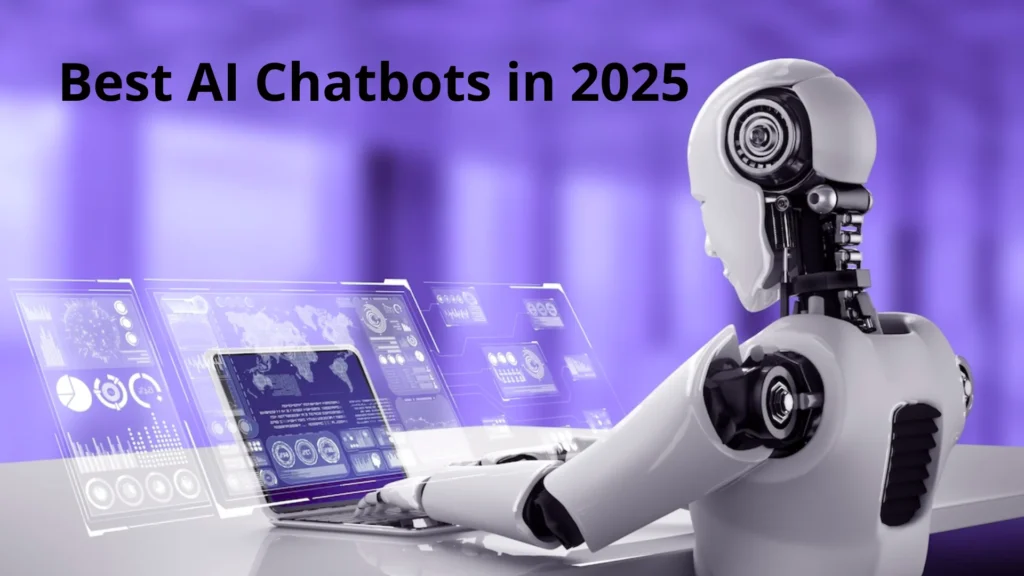What would you think if you had a world-class AI chatbot working for you, 24/7, always able to manage everything from customer service through task automation to just doing what you are doing before? You can imagine an AI chatbot online that learns your preferences to help you work more efficiently. How would that alter the way you work, live, and interact with others online? Well, guess what: in 2025, that is already going to be a possibility, not just a nice futuristic dream, thanks to the most advanced AI chatbots in existence today.
The best AI chatbots at a glance
| AI Chatbot Online | Best For | Key Features |
| Heyeve | Personal assistant and professional service customer. | Alterable replies, automated AI, and smooth integrations |
| Deepseek | Models of reasoning that are open to the community. | Advanced reasoning, free-for-all customization |
| Google Gemini | Google Products Integration. | Gmail, Google Sheets, Google Vertex AI integration |
| Zapier | Automation of Workflow. | Multi-step automation, seamless app integration |
| Meta AI | Engagement and Automation on Social Media. | Scheduling content, handling replies on social media |
| Pi (Personal AI) | Personalized Usage and customization. | Memory-infused AI, personalized responses |
| Poe(Quora) | Exploration of different AI models. | Model-changing knowledge exploration with the AI |
| HuggingChat (HuggingFace) | Open source development. | Customizable models and open-source access |
| Grok (XAI) | Integration of Twitter (X). | The true X integration for real-time engagement with users |
| Jasper | Content Creation and Marketing. | Blog generation and email-marketing automation. |
How do AI chatbots work?
AI chatbots conduct language processing through Natural Language Processing (NLP) combined with Machine Learning (ML) to handle communications with users. The following is a straightforward explanation of their operation:
- The chatbot receives text messages after users enter their input through the system.
- NLP algorithms break down the text’s meaning while processing the text in the chatbot.
- The software utilizes recognized input patterns to produce suitable responses that stem from the processed data collection.
- Many chatbots possess the ability to study past conversations, which enables them to develop better responses throughout their operation.
Chatbots become more efficient at performing help tasks and supporting customers through their capability to adapt and understand language.
LLMs vs. reasoning models
The functionality of AI chatbots depends on two major model classifications, which include Language Learning Models (LLMs) and Reasoning Models. Here’s how they differ:
LLMs (Language Learning Models):
Models create new answers through processing the patterns they acquired from enormous datasets. These models succeed at translating and producing responses that simulate human writing styles. OpenAI’s GPT models and other similar LLMs prove effective in delivering fluent language-based responses across customer support and creative writing applications.
Reasoning Models:
Reasoning Models dedicate themselves to processing logical data while establishing conceptual connections through their systems. Decision-making and reasoning become their strong suits in problem-solving functions that include complex problem analysis, data analysis, and future predictions.
The main potential of LLMs lies in their ability to reproduce human conversation, although reasoning models excel at logical understanding and application.
How I selected the best AI chatbots
The selection of perfect AI chatbots required more than simply choosing the most popular ones available. I used this specific sequence to pick the most efficient chatbots for 2025:
- The evaluation focused on assessing each chatbot’s execution level regarding its functions, including customer query support, workflow automation, and customized service delivery.
- User Experience takes precedence since users need easy methods to interact with and configure the chatbot system. A quality chatbot system needs to provide both effectiveness and usability for users.
- The integration capabilities of each chatbot matter to me because I reviewed their capacity to link with standard tools and platforms that improve their operational abilities.
- A vital aspect in my selection was security protocols, which protected user data.
- I based my choice on customizability because it allowed me to modify the chatbot according to both commercial and individual requirements.
Read Also: https://heyeve.ai/blogs/top-ai-chatbot-assistant/
Top AI Chatbots in 2025
Advancements in AI technology will advance the most effective chatbots of 2025 to meet higher standards of adaptability and integration within everyday usage. The following list includes the top AI chatbots available online, which suit various needs, including personal assistance and complex dialogue management.
AI Chatbot Online#1: Heyeve
AI Model:
Custom AI model for legal training
Pros:
- Mock trials, utilizing the power of AI, hence making courtroom simulations more realistic.
- Provides advice on the spot from the judiciary, a potential source for direct feedback to help hone legal skills.
- The interactive environment aids in developing advocacy, legal thinking, and presentation skills.
- A resource available to interested lawyers practicing around the globe
Cons:
- Legal sector specialization; not directly useful to general or non-legal fields
- Some benefits may be hindered if a user does not have a basic comprehension of legal terminology
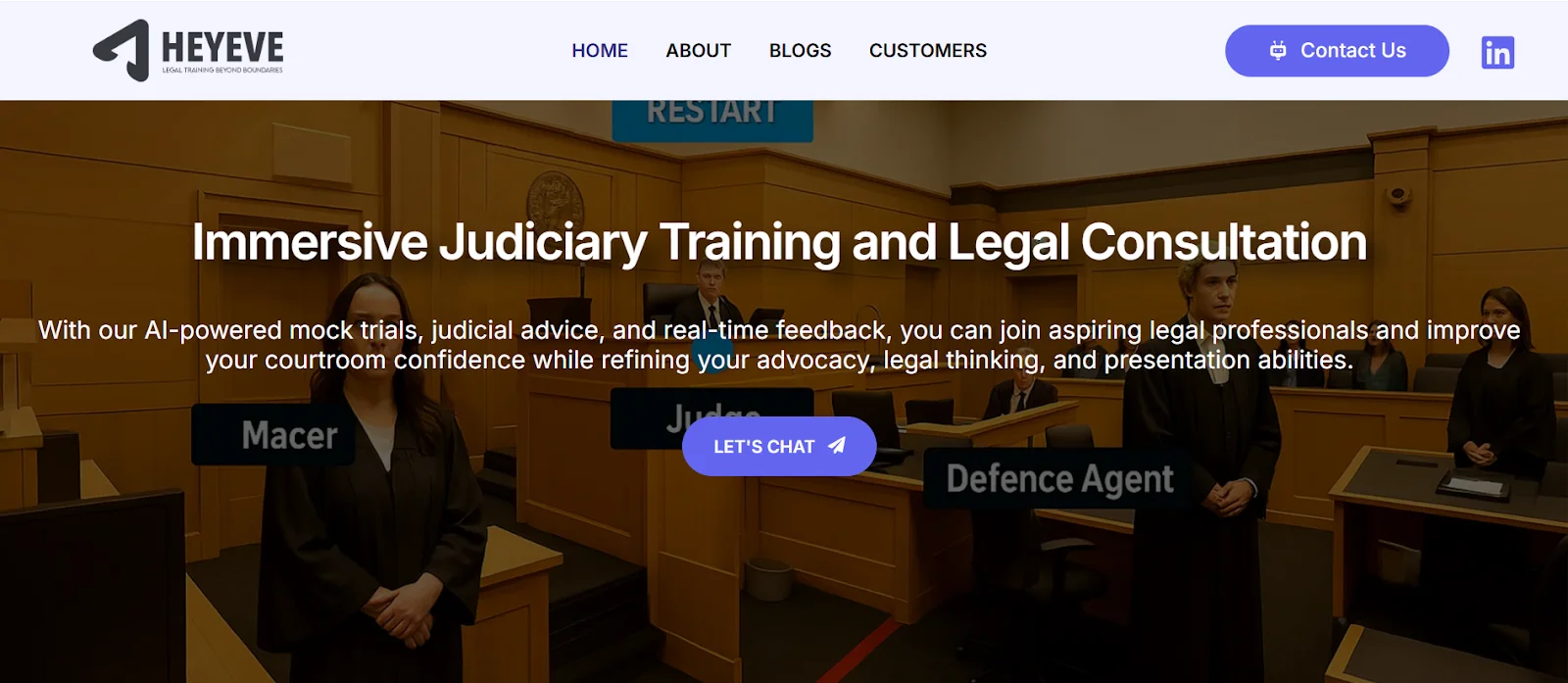
Heyeve was born out of the need for an in-depth legal consultation and training by employing AI chatbot technology. Through AI mock trials and instantaneous feedback, HeyEve tackles challenges with the confidence that every aspiring legal professional has about their courtroom confidence. Hence, a gifted AI to aid would-be advocates to develop legal skills and maybe upgrade them in thought and presentation. The situation created inside the courtroom allows the user to experience simulating legal procedures while also gaining insightful tips for progress within their discipline.
AI Chatbot Online#2: DeepSeek
AI Model:
Open-source reasoning model
Pros:
- Highly customizable with open-source access
- Strong reasoning and decision-making capabilities
- Perfect for complex tasks and AI development
Cons:
- Requires advanced technical knowledge to implement effectively
- Limited user-friendly features for non-developers
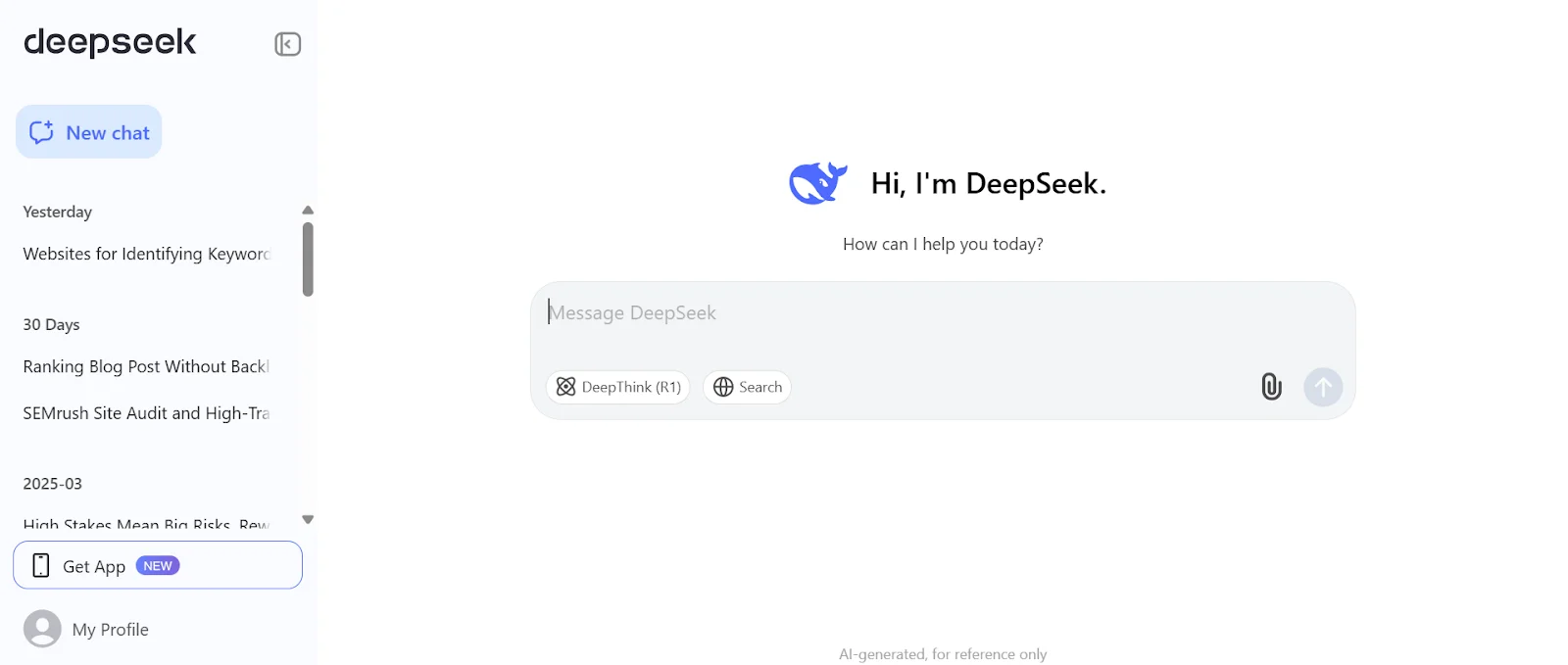
DeepSeek is an advanced AI chatbot using reasoning models to understand and solve complex problems. It is ideal for developers looking for open-source AI solutions and for tasks that require deep analysis and reasoning. With its high level of customization, it can be tailored to suit various specific use cases.
AI Chatbot Online#3: Google Gemini
AI Model:
LaMDA (Language Model for Dialogue Applications)
Pros:
- Perfectly hooks into the Google ecosystem (Gmail, Sheets, etc.)
- Incredibly powerful for conversing around all sorts of tasks
- Great for managing data and automating tasks
Cons:
- Limited to the Google platform, making it much less versatile.
- Less customizable than other models.
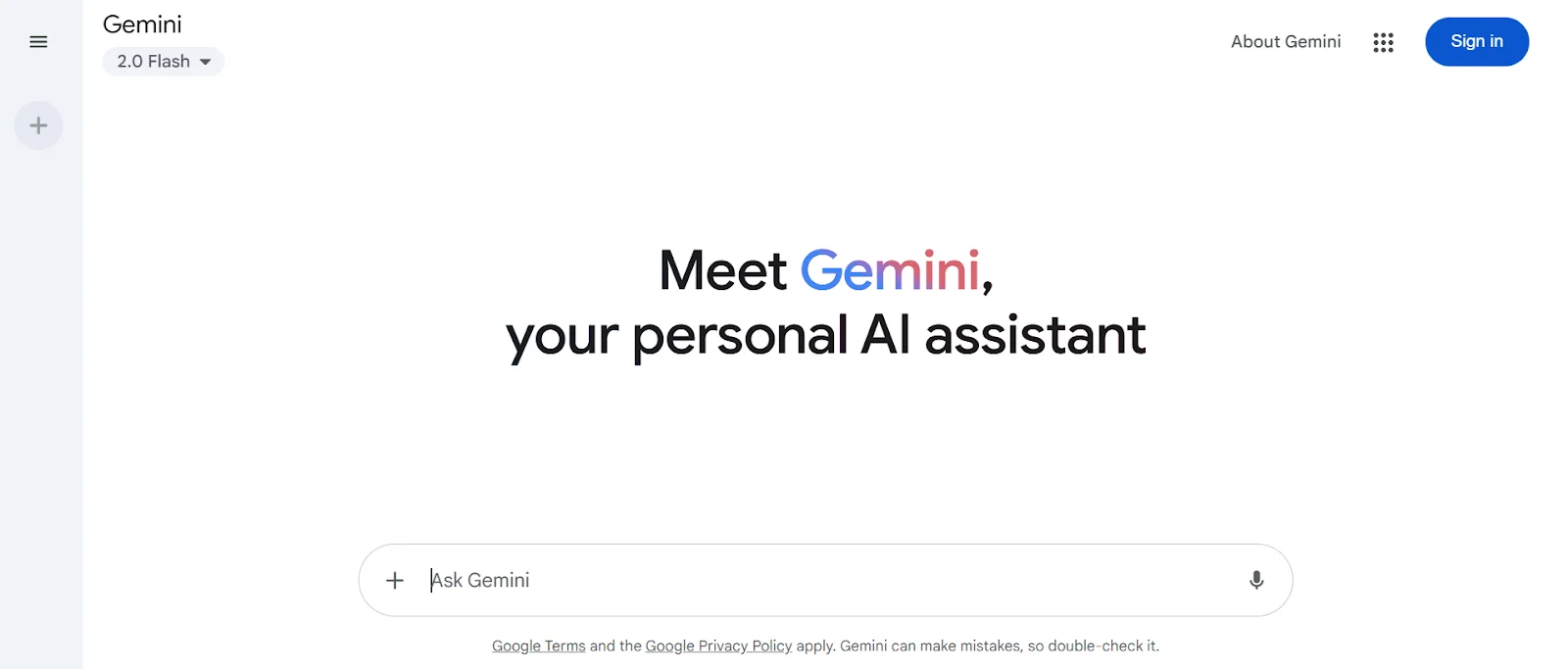
Google Gemini places most strength in integrating with Google services, and that makes it a great product for users already in the Google ecosystem. It can make queries and perform data analysis, both very simple ones and very rich and complex ones, and the entire experience is conversationally smart and efficient.
AI Chatbot Online#4: Zapier Agents
AI Model:
Zapier Workflow Automation
Pros:
- Fantastic for automating multi-step workflows within Zapier.
- Works with thousands of other services.
- Has powerful triggers and actions for an incredibly long list of possibilities.
Cons:
- Not supervised, so can’t train AI protocols on your data sources.
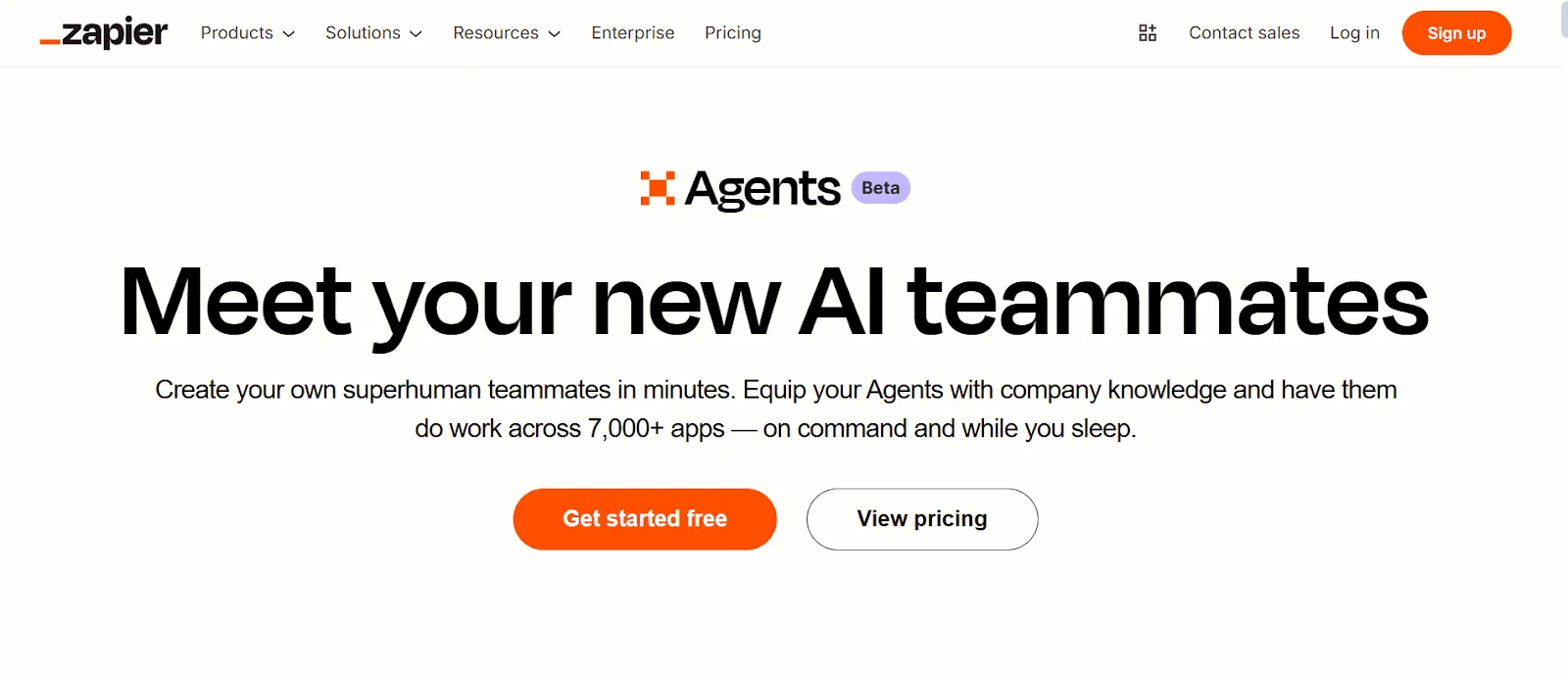
Zapier Agents are best at automating work and bridging different applications. Through this platform, organizations can further streamline their processes and save valuable time setting up automation across tools like Slack, Gmail, etc. It is, rather, a great tool in making tasks efficient, but not quite so in conversation.
AI Chatbot Online#5: Meta AI
AI Model:
Customized set of AI models for social media automation
Pros:
- Social media management is purpose-built
- Response and content scheduling automation
- Optimized for Facebook and Instagram
Cons:
- Very limited uses beyond social media platforms
- Not suitable for customer support except in the realm of social media interaction
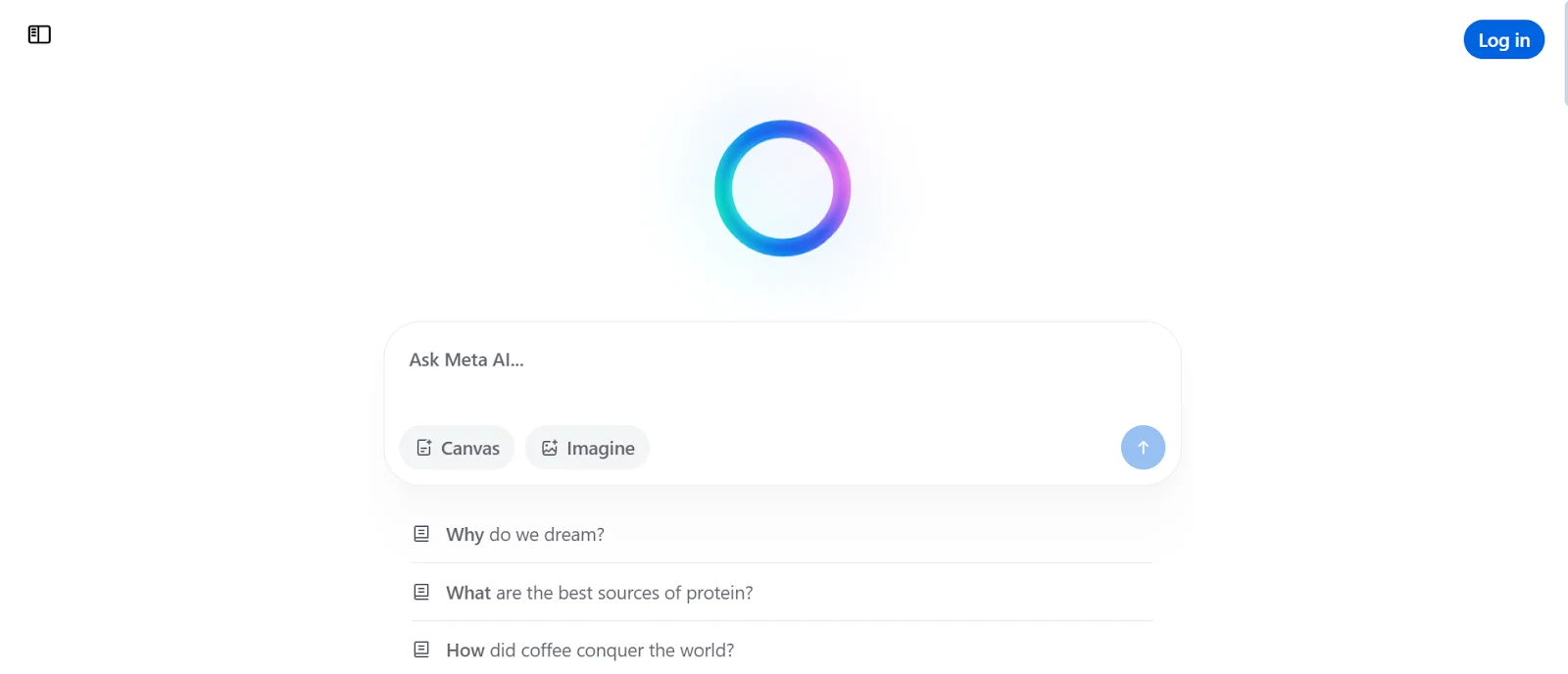
Designed for managing social media accounts like Facebook and Instagram, Meta AI helps businesses automate posts, interact with followers, and schedule content-on this note, it is the best choice among its makers. It drives social interaction between users and brands, but lacks conversations.
AI Chatbot Online#6: Pi (Personal AI)
AI Model:
Memory-based Personal AI
Pros:
- Very personalized, changes according to preference.
- It remembers conversations to make better responses in the future.
- Custom-built needs for every individual.
Cons:
- It is designed mainly for personal usage, rather than expansive business-type situations
- May require continuous tuning for best efficiency
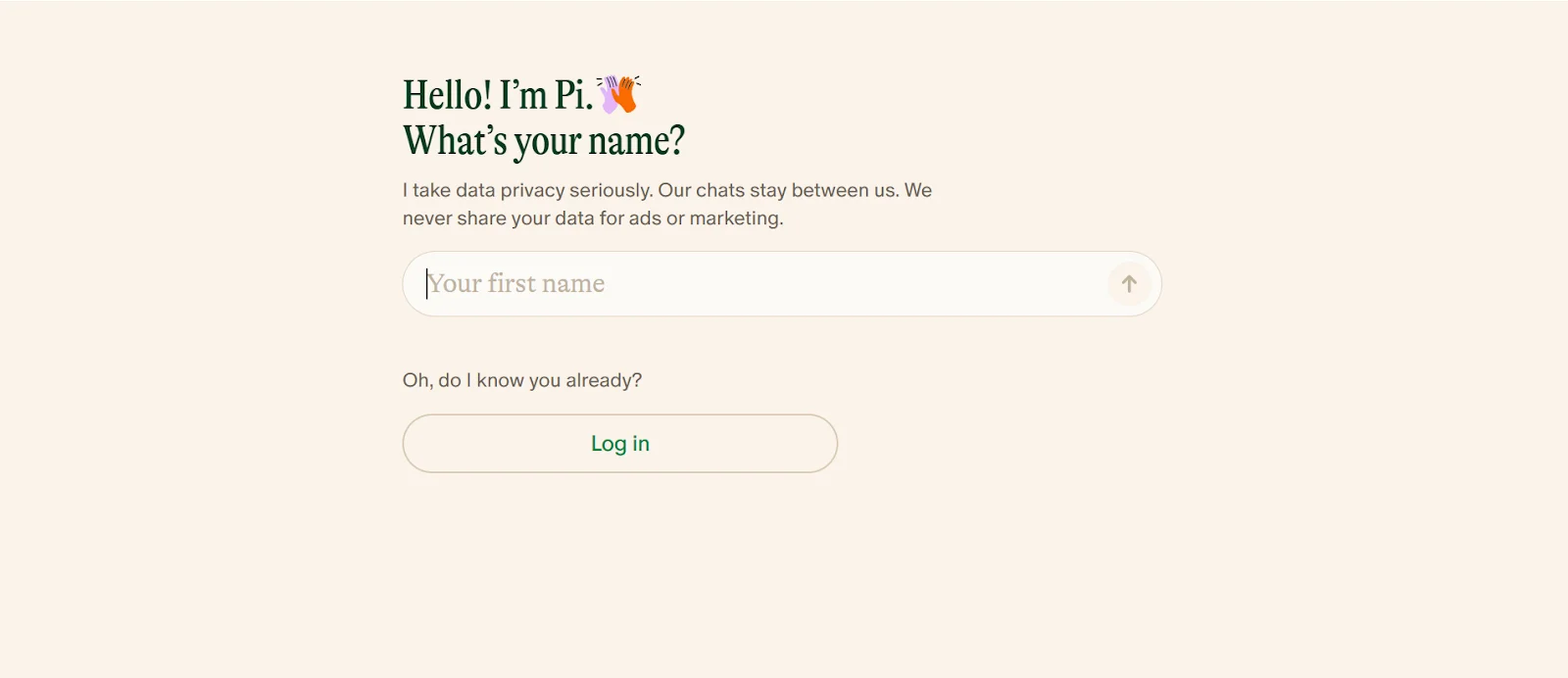
Pi is the chatbot powered by AI that knows everyone according to his/her usage. For the most part, Pi employs memory-based AI to retrieve the entire previous context of its interaction to make the conversation most satisfactory and enhance its performance during the next interaction, so it would need to be recommended to those who like such personal assistants with personalization.
AI Chatbot Online#7: Poe (Quora)
AI Model:
Number of AI models switchable
Pros:
- User switches among different AI models
- Responses vary according to needs.
- Good for experimentation about what different AIs can do.
Cons:
- Users can get varied results according to the model used.
- Not very specialized in handling complex stuff.
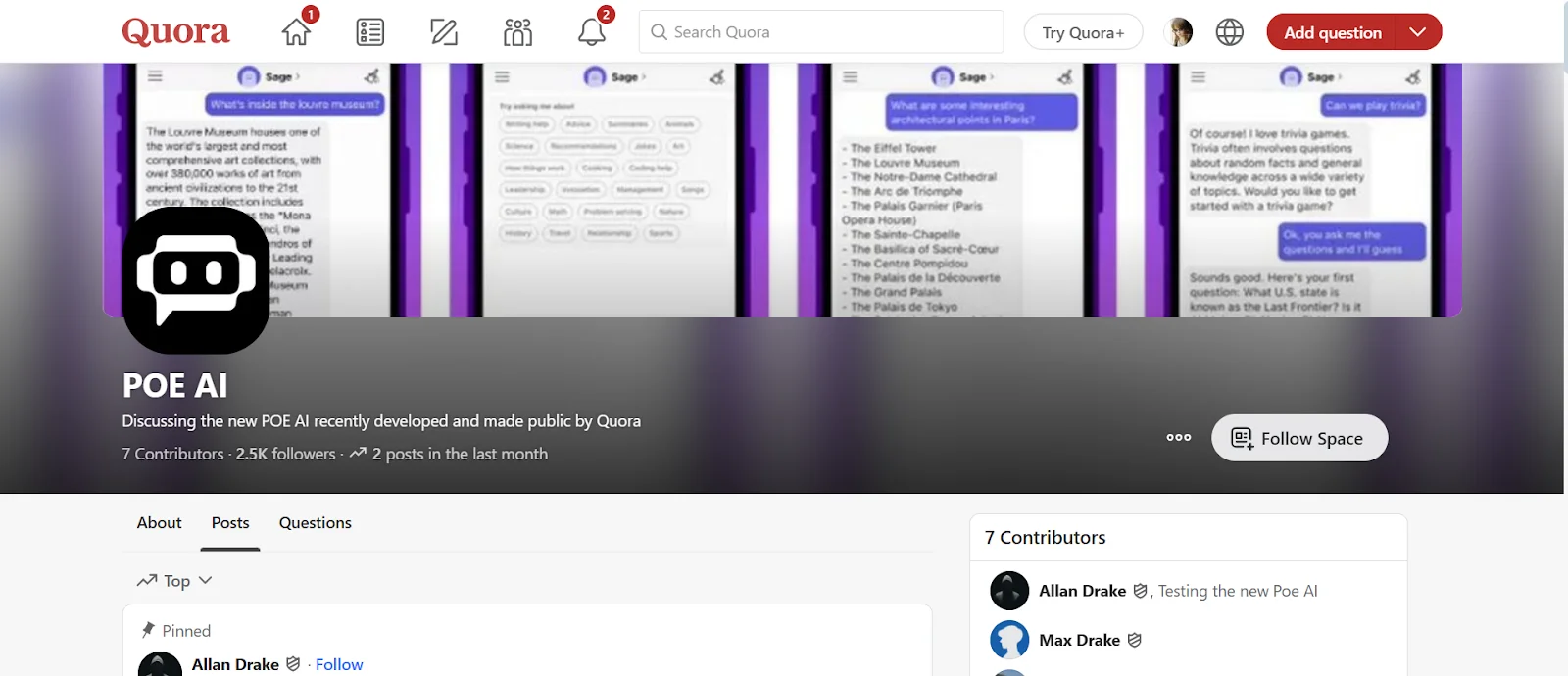
Poe is quite different in that it permits its users to play with various types of AIs. It works very flexibly for users experimenting with how an AI could handle his or her requests differently, having a very diverse range of responses. Ideal for users seeking variety and playing around with AI technology.
AI Chatbot Online#8: HuggingChat (HuggingFace)
AI Model:
All the open-source transformer models.
Pros:
- Fully open-source and customizable
- A community of developers strong enough to support one another
- Best for creating bespoke AI solutions
Cons:
- The know-how would be great to set up and use effectively
- Not for the user who prefers simple and ready-out-of-the-box solutions.
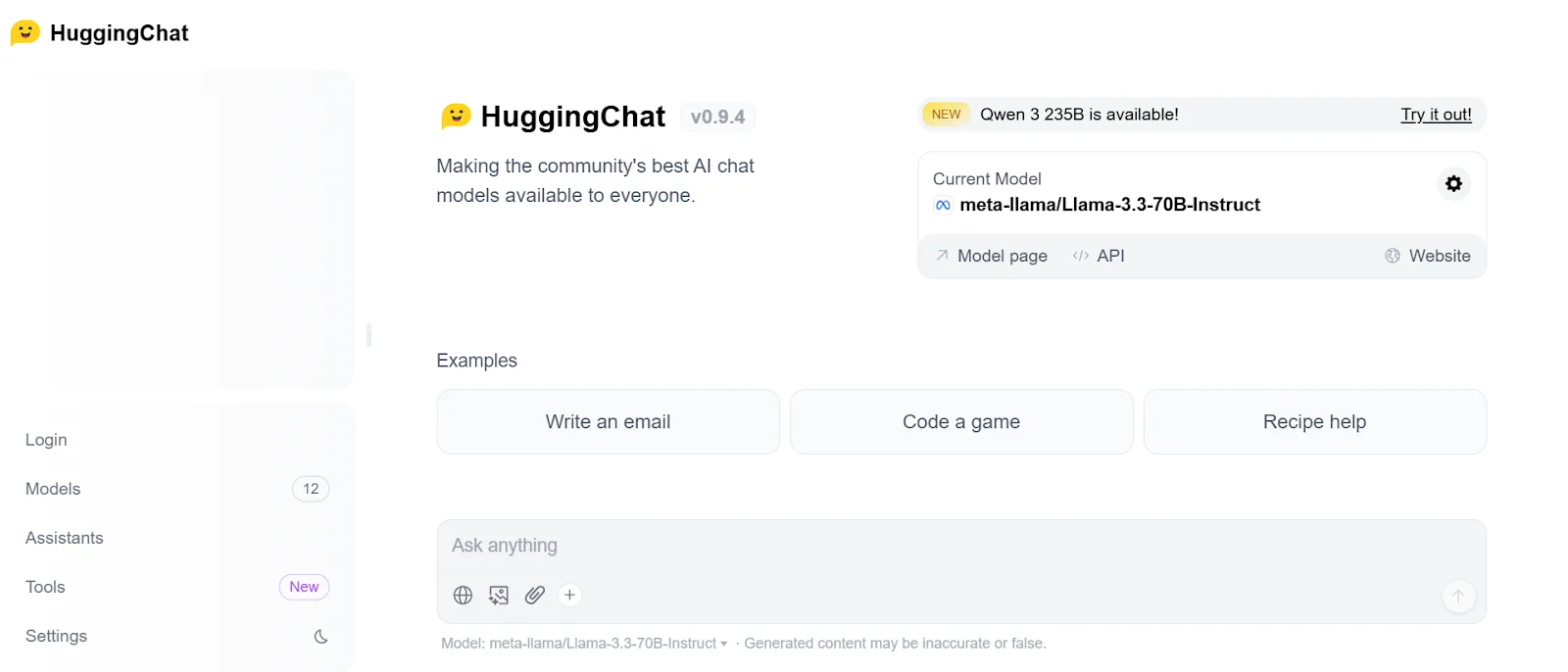
Hugging Chat has Hugging Face behind it as it directly contributes to open-source-affiliated transformer models for generating sources. Hugging Chat is perfect for developers looking for custom-built AI solutions as it is flexible and adaptable for different applications.
AI Chatbot Online#9: Grok (xAI)
AI Model:
By xAI Proprietary AI
Pros:
- It specializes in integrating with Twitter (X).
- It engages followers in real time.
- It interacts with users in a personalized way.
Cons:
- Twitter (X) only interactions.
- Not for other customer service or business automation.

Grok is completely made to work over Twitter (X) with businesses so users can talk to them in real time. It is very good at handling automated responses and talking through interactions based on Twitter, making it perfect for social media managers wishing to streamline their Twitter actions.
AI Chatbot Online#10: Jasper
AI Model:
GPT-3 and GPT-4 OpenAI
Pros:
- Great for content creation (blog posts, social media, emails).
- Seamless interface with the minimum setup.
- Scalable from a small business to a larger enterprise.
Cons:
- Full access requires a subscription
- Not meant for casual conversation or any task nonspecific to content creation.
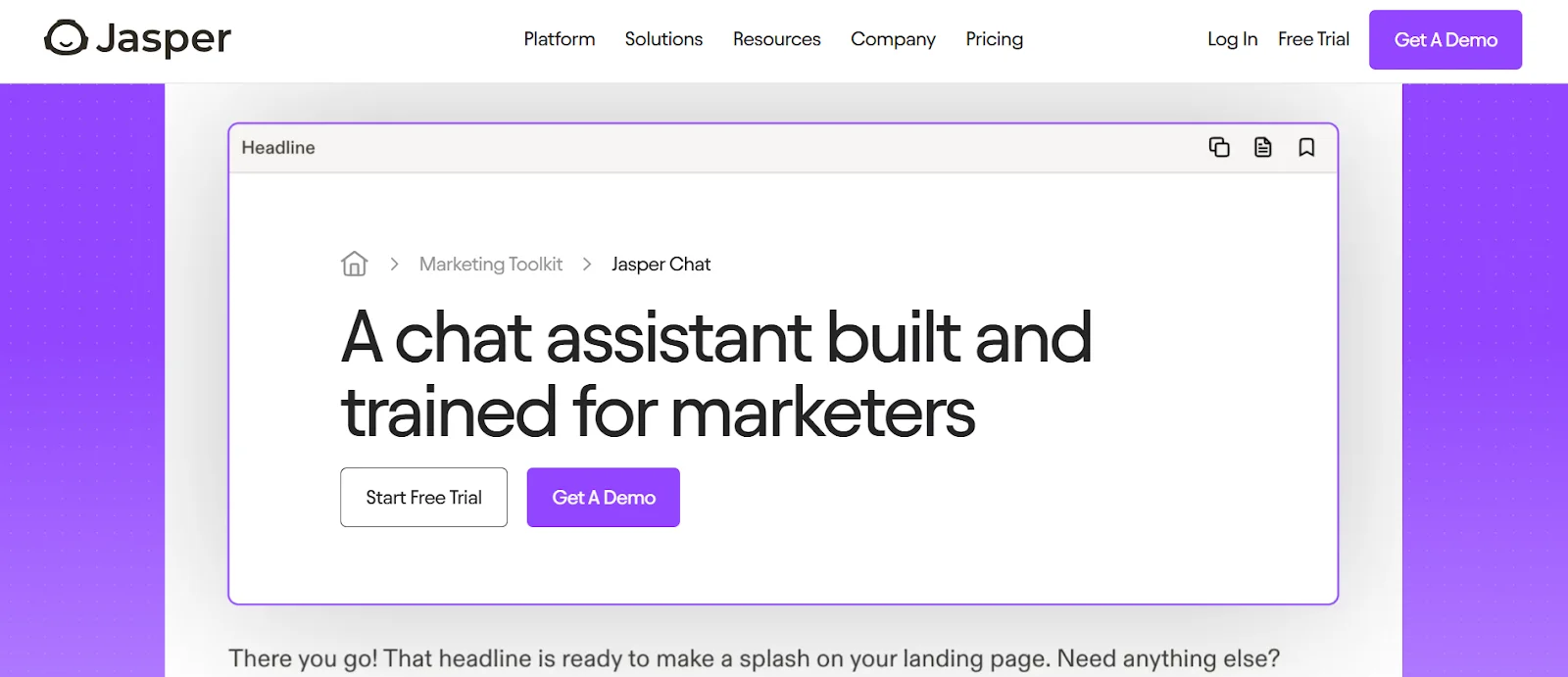
Jasper is an AI-driven content-generating tool designed to deliver fine writing content at a fast pace. It stretches from blogs to spitting out lengthy email marketing campaigns and is largely preferred by marketers, writers, and businesses aiming to scale their content production without losing quality.
Factors to Consider When Choosing an AI Chatbot
Your first step should be to establish the precise task that the chatbot will perform. What function do you require from the AI chatbot for your needs, between customer service response generation or automation processes? Pick an AI chatbot system that matches your precise needs, either for e-commerce aid and lead generation systems or social media relationship maintenance.
Ease of Integration:
The system must easily link up with your current software tools alongside existing platforms and applications. Check for compatibility features that integrate the chatbot with CRM systems and other tools like websites and apps, and social media channels to achieve a smooth operational flow.
Customization:
The chatbot system enables end-users to make adjustments to their response patterns and operational parameters. Your brand voice and tone can be embedded into a highly customizable chatbot system, which helps establish customer fidelity and presents a consistent image.
AI Model:
You should learn about the specific AI model that powers the chatbot solution. GPT-3 along with LaMDA, excel at producing conversational text outputs, whereas reasoning models prove most effective in decision-related tasks. Select an AI model according to your application requirements.
User Experience:
A properly designed chatbot presents users with an easy-to-use system interface. Users should find it simple to use the system as well as work through it. Monitor how well the bot functions regarding its user interface and response quality among contextually relevant communications.
Multilingual Support:
A multilingual FAQ module must be included when you maintain users located throughout the world. A personalized user experience becomes essential for customers throughout different locations.
Security and Privacy:
Every security protocol and privacy regulation, including GDPR and CCPA, must be followed by the chatbot system. User data protection must always be treated as the top priority.
Cost and ROI:
Examine how much implementing the chatbot system will cost and how this expense relates to possible profit gains. Various chatbots operate either without any cost or with economical entry levels and provide additional premium elements. Confirm that the advantages provided by the investment establish a solid return on investment.
Scalability:
Business expansion requires your automated chat interface to adjust at the same rate your company expands. Search for a solution able to grow alongside higher work volumes while adding functionality based on your business development needs.
Customer Support:
Test the quality of customer support provided by the chatbot vendor because you will need assistance with both technical problems and integration requirements.
Conclusion
The selection of an optimal AI chatbot for business operations and personal purposes remains vital because it will enhance operational efficiency as well as customer engagement and user interactions. The selection process for your best solution requires analysis of purpose, integration ease and intelligence level, and security capabilities so it matches your requirements precisely.
If you select the correct AI chatbot, your business will gain operational excellence while maintaining leadership in your competitive market. Through thorough testing of available bots, you should choose the one that provides maximum performance at reasonable price points for your particular business needs.

